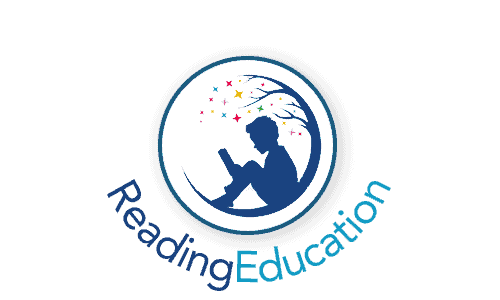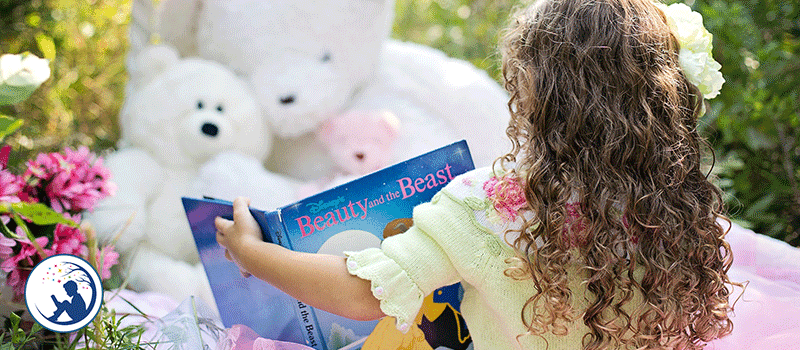Although learning to read is an organic process, it does require proper teaching of a wide array of methods, techniques, skills, and strategies, such as phonics and phonemic awareness. And given that it does require a little more than just putting a book in your child’s face and teaching them the words on the page, the letters of said words, and how to say them, it’s no wonder that some parents can be a little daunted by the prospect of teaching their four-year-old to read.
However, it really doesn’t have to be a daunting task! Firstly, your child’s teacher will be their main teacher; therefore, they’re going to learn most things at school, meaning there isn’t anywhere near as much pressure on you! And secondly, teaching at home is actually relatively straightforward. That being said, as is the case with most things in life, knowing where to start isn’t always the easiest thing to figure out.
That’s where we come in. We know a thing or two about teaching four-year-olds to read; therefore, we’ve put together this post to give you and your child the best possible start on your reading journey (yes, it’s your journey, too!). We know that most parents reading this won’t have taught a child to read before, so we’ve made it super easy to understand, digest, follow, and implement. Teaching needs to be positive and rewarding, and our ten tips below will give you the perfect opportunity to marry these two to create the ultimate reading environment for your four-year-old.
It’s important to remember that learning to read is often a daunting process, so always take things one step at a time, introduce the proceeding ideas gradually, and don’t be afraid to take a step back or slow things down if needs be. All children will learn at different speeds, so try not to get too hung up on how quickly your child is learning. Instead, purely focus on making progress – no matter how small it is. So, without further ado, let’s get stuck in!
How To Teach Your Four-Year-Old To Read: 10 Easy-To-Implement Ideas
#1 – Create a ‘Reading Environment’
The great thing about reading is that it can be done anywhere at any time – even if you’ve only got ten minutes spare; therefore, never miss an opportunity to teach your four-year-old to read. Of course, we don’t mean making them read every spare minute of the day they have, but turning your home into a ‘reading environment’ can help your child to learn all day, every day, without them even realising it!
One of the best ways to do this is by labelling things around your house. Make posters, labels, and signs and place them in and around your home. Doing this will help your child to form connections between objects, words, letters, and letter sounds, i.e. the key ingredients to successful reading. In fact, you don’t even need to be at home to do this. If you’re out and about, point at posters, signs, and anything else with words on it. When doing so, always say the word, then break it down into each individual letters and the different sounds of the word. To make it easier for them, ask them what the first letter of the word is and if they know the letter sound. If they get this right, see if they know any other words that begin with the same letter.
#2 – Don’t Forget Nursery Rhymes
Although nursery rhymes may seem like a thing of the past and things you’d read to younger children, they really can be of value to four-year-olds learning to read. After all, learning when young is all about having fun, and nursery rhymes will often bring a smile to a child’s face and are the definition of fun – so be sure to utilise them!
Singing nursery rhymes helps children to become accustomed to words, letters, letter sounds, word sounds, and syllables – without even realising they’re learning (which is often the most effective way). In fact, one of the premier ways to enhance phonemic awareness (probably the most essential skills where learning to read is concerned) is to recite nursery rhymes and songs and clap at the same time. Make sure you join in, as this will further help to increase the parent-child bond, which makes learning even more fun!
#3 – Read Together On a Daily Basis
No matter what you’re doing or how old you are, the adage ‘practise makes perfect’ is relevant. Period. Therefore, it’s absolutely vital to practise reading as much as possible. Of course, we don’t mean to point where your four-year-old is exhausted from reading, but we do mean setting aside time every day to learn to read – even if you can only squeeze in 20 minutes here or 15 minutes there.
Reading every day will help your child learn how to ‘sound out’ words, build comprehension, boost their vocabulary, and listen to what fluent English sounds like (from you). What so many parents don’t actually realise is that simply hearing someone else read can help their child to pick up many reading skills. Plus, reading on a frequent basis can help foster a love for reading; and if a child loves to read, he or she will read more, which will only speed up their reading development!
#4 – Be Patient
Although this might be an obvious comment to make, it really is crucial to be as patient as you can – even if you feel your four-year-old isn’t making the reading progress, you’d hoped for. Children will always learn at their own pace, which will be different from their peers and siblings, so try not to compare them to other children. Being patient helps to create a relaxed, easy-going, and fun environment – three factors that result in learning becoming a time full of smiles, happiness, and joy!
#5 – Use Word Cards
Despite being a complex process, the tools required to learn to read don’t have to be. For example, word tools are exceptionally simple and extremely effective. In fact, they’re definitely one of the best ways to teach your child the different sounds of a word. Plus, they’re super simple to make if you don’t want to buy them. All you need to do is cut out some pieces of cardboard (roughly A5 size) and write a word on them.
Obviously, a four-year-old will only just beginning their reading journey, so starting with words that contain three letters is the best place to begin. But using them is really easy for both you and your little one. Here’s how to use word cards:
- Ask your child to select a card.
- When they’ve selected a card, read the word out to them and hold up three fingers.
- Ask your child to say the first sound of the word, then the second, then the third.
- Once they’ve said each individual component, ask them to say the full word. Simple!
We love this activity because it is cheap and easy to set up and because it’s super easy to do, doesn’t require vast amounts of focus from your child, is fun, and, crucially, helps your four-year-old to develop necessary decoding and phonics skills.
#6 – Don’t Be Afraid Of Technology
Learning to read (or any form of learning to read for that matter) should be fun and enjoyable. However, children don’t often have the longest of attention spans and can become bored rather easily; therefore, it’s imperative to ensure you use a variety of strategies, methods, games, and activities to ensure boredom doesn’t ensue. This, as you can probably tell from the title of this sections, will involve embracing technology.
Although it’s easy to cast aside computer, laptops, tablets, and smartphones due to fear of your child becoming addicted to ‘screen time’, it’s essential to understand that these devices can have profound effects on your child’s ability to read – if they’re used in the correct fashion.
#7 – Sight Word Games
‘Sight words’ can be described as words that are quite difficult to sound yet need to be recognised on sight (hence the term sight words). Sight words are commonly high-frequency words that occur on a regular basis during everyday reading. Examples of such words are, does, here, was, I, they, the, there, their, have, to, etc.
When teaching your four-year-old how to recognise sight words, we recommend using a game we like to call ‘When you see it, say it’. Learning to both recognise and read sight words is an integral part of the learning to read process, and will help youngsters to improve their reading fluency at a much more rapid pace. By the age of four, your child should know a handful of sight words, but by the time they start school, this number should be around 20-30 (or even more if they’re super quick learners!).
#8 – Letter Magnets
One of the most common difficulties young children face when learning to read are middle vowel sounds. However, using another simple learning tool, i.e. letter magnets, you can help your four-year-old to begin to understand and say middle vowel sounds. Plus, it’s really easy to do. Here’s how:
- Place all the vowels on one side of the fridge (or wherever your letter magnets are).
- Say three-letter words that have a consonant-vowel-consonant structure.
- Ask your child to spell the word.
- To give them a nudge in the right direction, say all of the vowel sounds out loud (A, E, I, O U) while pointing at the letters, then ask them which one makes a sound like the middle sound of the word.
#9 – Word Games
Let’s face it, all children (and most adults!) love playing games, so allowing your four-year-old to play educational games is one of the best ways to teach them how to read. In reality, it doesn’t matter what type of word games you play – ones you’ve purchased from a shop, ones you’ve made yourself, ones you’ve created yourself etc. The key is to make them fun while at the same time teaching your child something to do with reading, letters, or anything else related to reading and the alphabet. At the end of the day, if a child is having fun, they are more likely to want to carry on learning. When I was younger, I often found traditional learning quite boring; however, as soon as a game was involved, I was excited to learn – and I’m sure there are lots of children out there who are exactly the same!
#10 – Core Skills
Last but certainly not least, let’s talk about core skills. Where reading is concerned, there are five primary components that lay the foundation for all reading skills and are absolutely vital to ensure successful reading. These are:
Phonemic awareness, which is the ability to hear sounds and be able to manipulate different sounds within words.
Phonics, which is the ability to identify the relationship and connection between letters and the sounds they make.
Vocabulary, which is the ability to understand the meaning of words, their context, and how they are defined.
Fluency, which is the ability to read aloud with understanding, speed, and accuracy.
Reading comprehension, which is the ability to understanding the meaning of the text, regardless of whether it’s fact or fiction.
Teaching Your Four-Year-Old To Read: A Summary
The above ten points should help you to lay a foundation of learning when your child is away from the classroom and in the comfort of your own home. While learning to read will, of course, take more than the list of tips mentioned above, by implementing the above, you’ll help to speed up your four-year-old’s reading skills.

